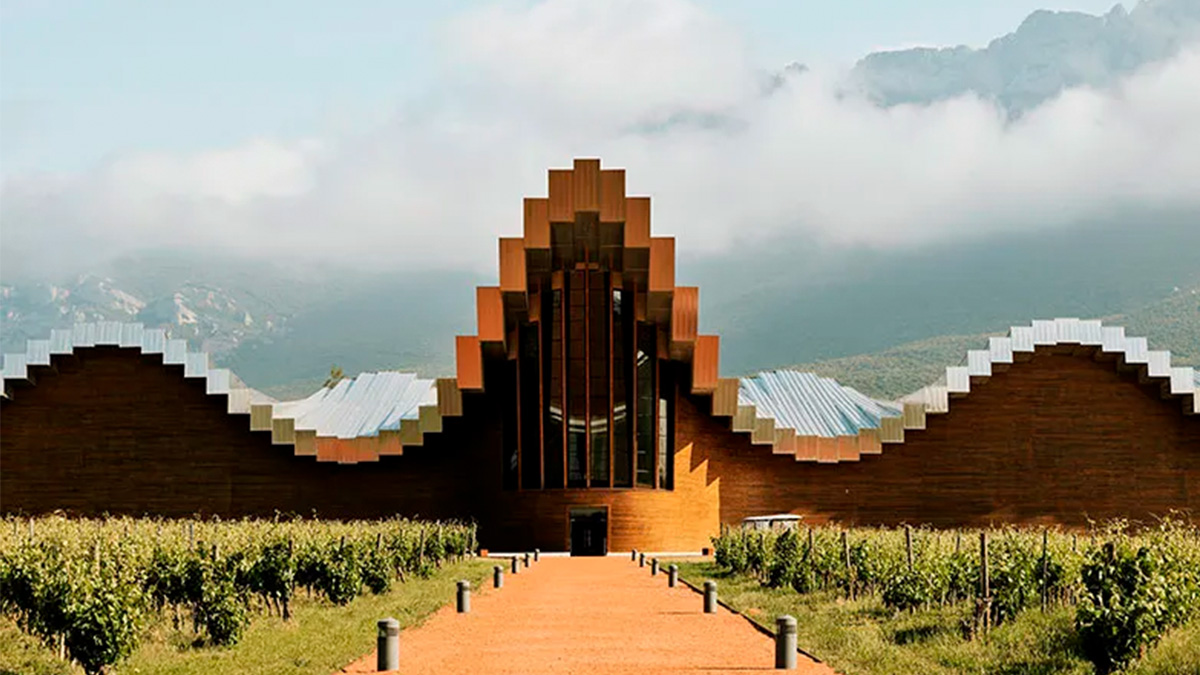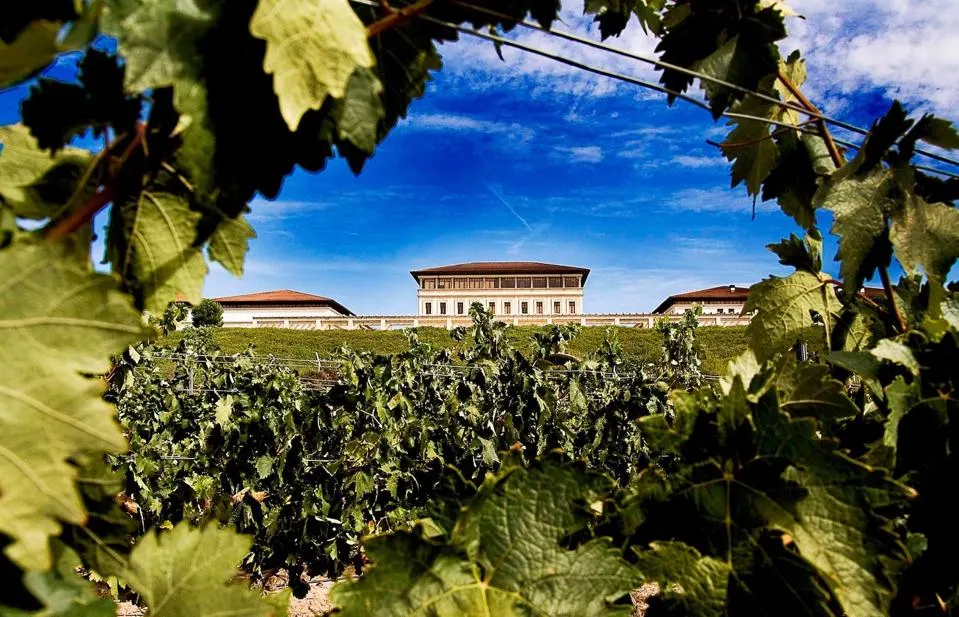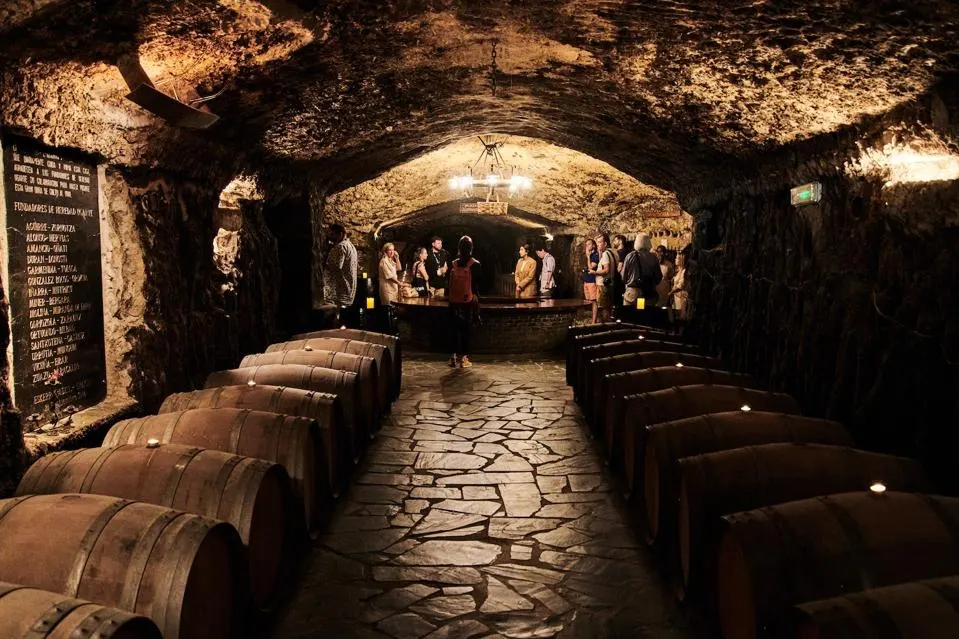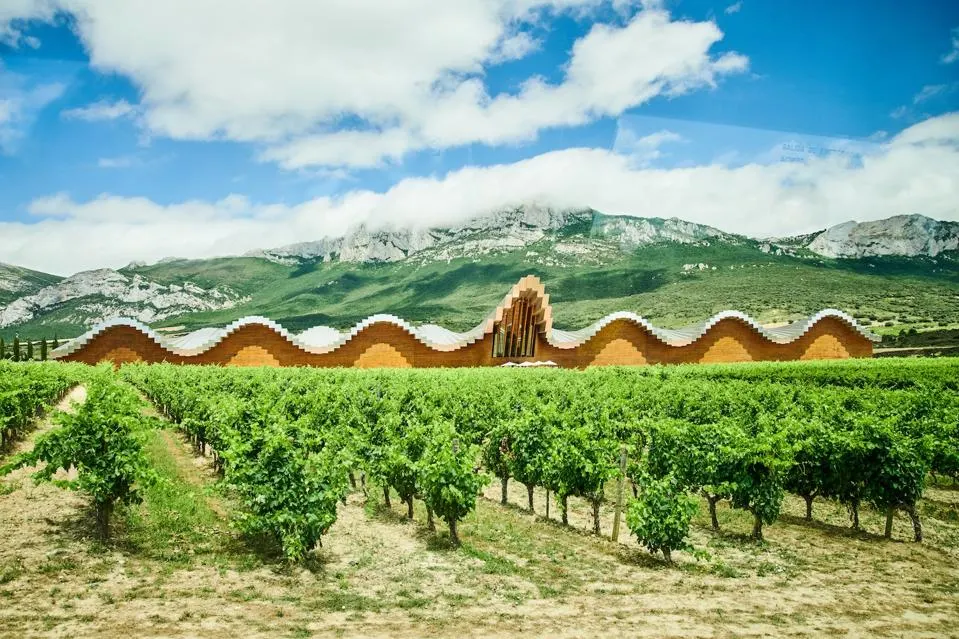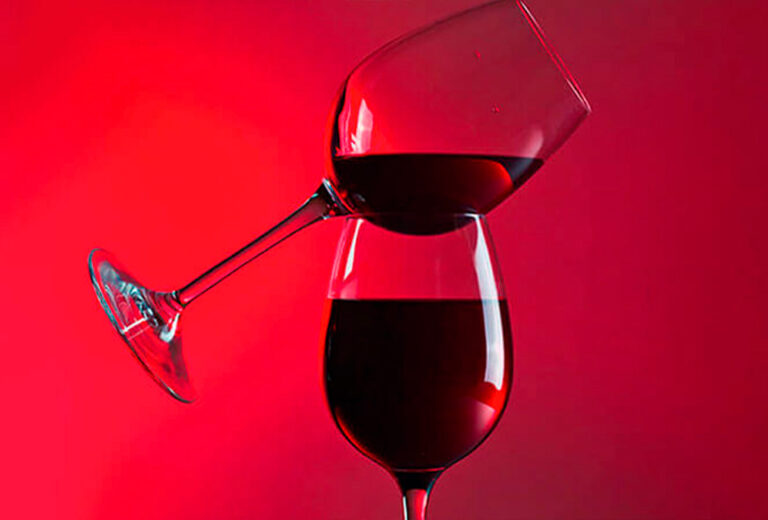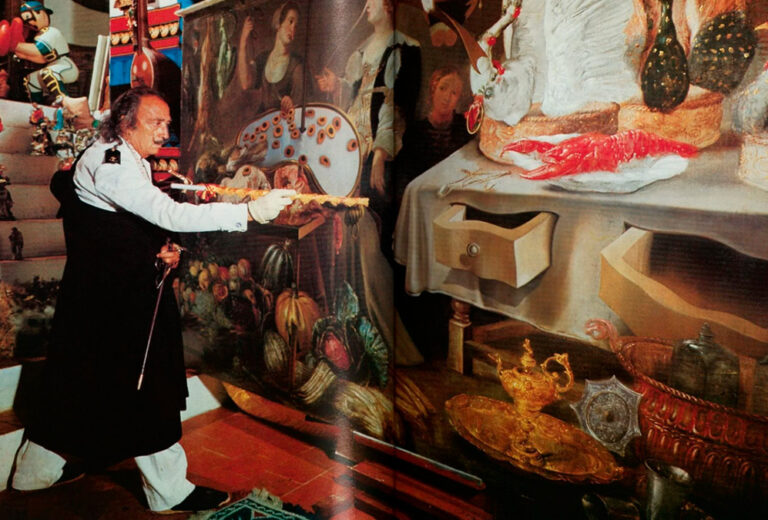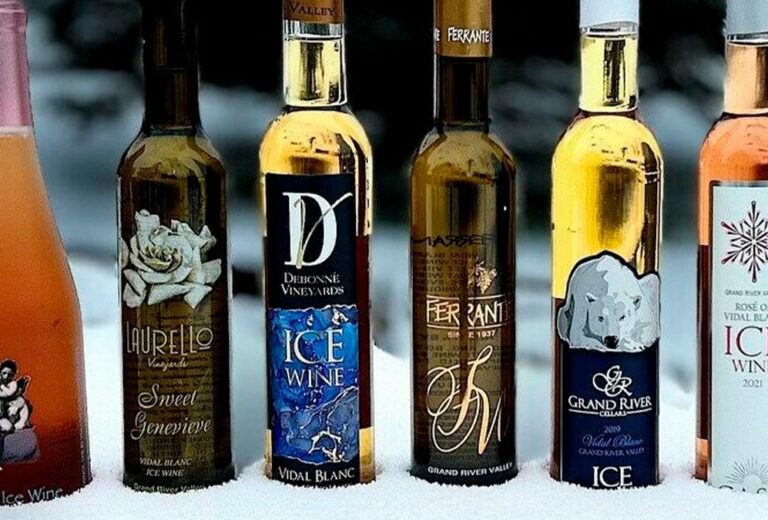Click here to read the Spanish version.
Last month the World’s Best Vineyards awards were held in La Rioja, and the Rioja vineyard ‘Marqués de Riscal‘ took second place among a competitive display of reds and whites ranging from fruitier flavors to the more complex profiles of aged grand reserves.
In this region, wine is worshipped in many ways: from the tasting experience, to the appreciation of its works at the Vivanco Wine Museum, the harvest events, its historic and modern wineries, or the special pairing dinners that make it an idyllic destination to discover the depth of wine in an immersive way.
Essential local vineyards
Bodegas Franco-Espanolas, in Logroño, was founded in 1890 as a partnership between France and Spain when the French arrived in the region in an attempt to replace their vineyards devastated by the wine plague, phylloxera. The semi-sweet white ‘Diamante’, Spain’s best-selling white Rioja, is made here.
Bodegas Ysios, designed by Santiago Calatrava, has the wow factor you would expect from the renowned Spanish architect. Located near the historic town of Araba, the building’s undulating roof, which reflects the peaks of the nearby Sierra de Cantabria, creates a stunning and harmonious visual connection with the natural landscape.
Rioja Vega, Navarra was developed in 1882 according to the concept of ‘chateaux’ with 70 hectares of vineyards surrounding the wineries. Guided tours, wine tastings with tapas or lunches overlooking the vineyards are offered.
El Barrio de la Estación, in Haro, has six wineries under one roof that can be visited for tastings: Bodegas Bilbainas, C.V.N.E, Bodegas Muga, where you can see how barrels are made from scratch, Gómez Cruzado, La Rioja Alta and the most recent winery, Bodegas RODA, founded in 1987.
Bodegas Beronia, Ollauri uses French and American oak barrels to create a truly distinctive flavor in its wines, 95% of which are red and are made to age for long periods of time in barrel and bottle.

